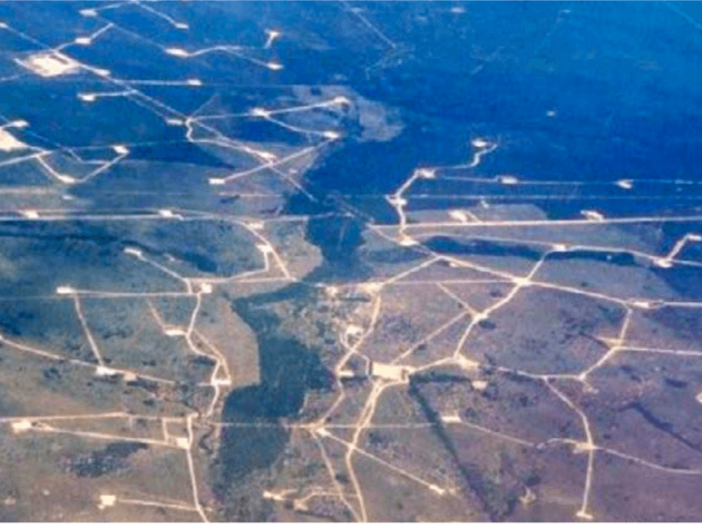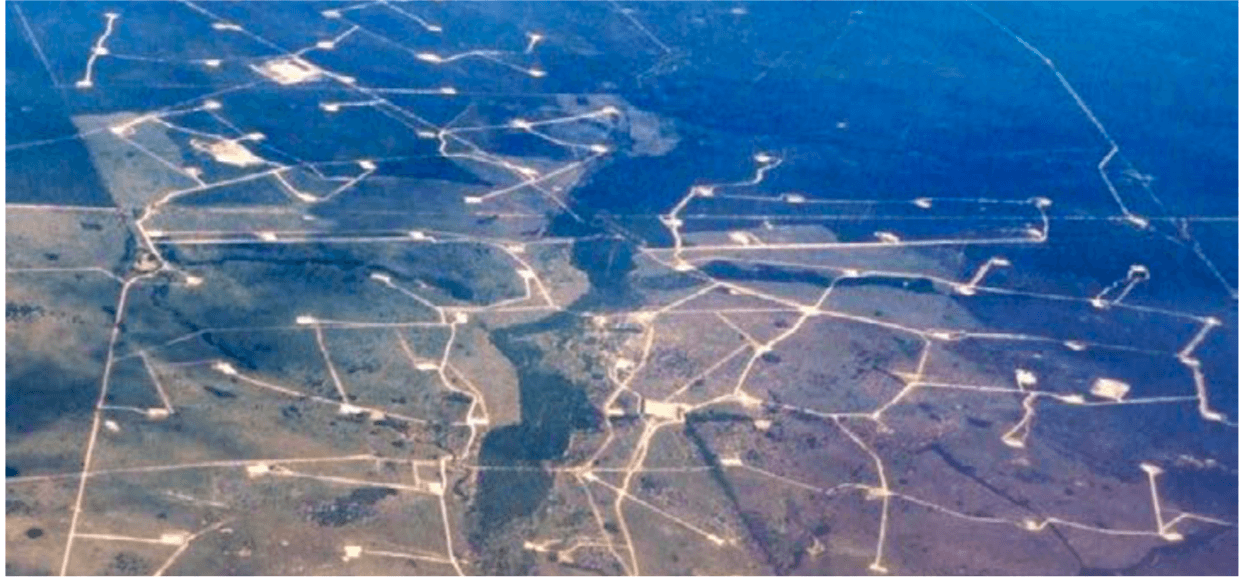
Even the energy storage potential of the Snowy Mountains is in the news, as is Tesla with their big batteries. With these technologies and resources, we can aim to avoid the worst effects of climate change and quit burning coal and gas to generate electricity.
But there is more to renewable energy than just generating electricity. Australia also has massive opportunities for deploying technologies that harvest or create ‘renewable heat’.
It may be because Australia’s climate is not as cold as elsewhere that the term ‘renewable heat’ is rarely used here. Contrast this to Europe where, because of its key role in reducing greenhouse gas emissions, entire conferences are devoted to renewable heat.
Beyond the environmental benefits, there is a new economic reason why Australians should be interested in using renewable heat: the rapidly rising price of gas.
A bit of history: why gas was cheap…
Starting in the 1950s, significant oil discoveries were made, stretching from the waters of Bass Strait to the Moomba outback to the remote North West Shelf and into the Timor Sea.
Unfortunately for the oil producer, these discoveries came with a problem: too much gas. A BHP executive, thinking about all of these discoveries, once said, “Australia is an island made of coal and surrounded by gas”!
It’s easy these days, after decades of building gas pipelines and other infrastructure, to think of gas as a valuable resource, but originally it was a nuisance byproduct that served little purpose other than to slow down the rate at which oil could be brought to the surface.
Nuisance gas either had to be vented directly into the atmosphere, burned near the wellhead (known as ‘flaring’) or, if required by far-sighted regulators, saved as an energy source and raw material for later use.
How inefficiently this gas was used was not a great concern. Many uses for gas were found, from producing petrochemicals, generating electricity, firing manufacturing operations, heating buildings, warming outdoor cafes and illuminating casinos with great balls of fire.
We were all ‘cooking with gas’ that was the cheapest in the developed world.

But still gas got in the way of oil production. What could be done to dispose of even more?
Ways were found to export gas to overseas customers. Although costly because gas must be liquefied at -160 °C before it can be loaded onto a ship, massive investments were made to export gas, first from the north-west of Western Australia (1989) and later from Darwin in the Northern Territory (2006).
In the other states, time and again companies such as Esso with large reserves of gas in the Bass Strait and Santos with reserves in the central Australian desert would investigate whether their gas could be profitably exported. The investments could never be justified, so, on Australia’s east coast, the gas glut remained.
This became known as coal seam gas, or CSG. Vast ‘reserves’ were identified. With these developments, eastern Australia didn’t just have decades worth of gas, it now had centuries of potential supply. The gas glut became even worse—for gas producers and marketers. Something had to be done with all this gas.
And why gas is no longer cheap
Following the lead of WA and the NT, exporting gas was seen as the gas industry’s answer for the east coast. Starting in 2010, the CSG producers decided to build six gas liquefaction plants in Gladstone, Queensland. Connecting pipelines were laid.
Thousands of CSG wells were drilled across Queensland and some in New South Wales. Today in 2017, three times as much gas is exported from Gladstone than is used in all of eastern Australia. When combined with the gas exports from WA and the NT, Australia is on its way to becoming the world’s largest gas exporter.
There is plenty more CSG in the ground in Queensland that could feed even more liquefaction plants. The oil and gas producing company Shell has regulatory approvals to build an additional four plants.
But by 2015, even before the last Gladstone plant was complete, it was clear that global oil and gas prices had come off their peak. Exporting gas to Asia quickly became less attractive. Plans for any more CSG export plants were dropped.
Somewhat counter-intuitively, as a result of supplying overseas customers with huge volumes of CSG, eastern Australia’s domestic gas market was also transformed. Negotiating power shifted from gas buyers to gas sellers.
Domestically what had been a buyer’s market for a nuisance byproduct became a hotly contested seller’s market. As has been the case with oil for many years, local consumers now must compete with real or perceived overseas buyers. Wholesale gas prices in eastern Australia doubled, and then doubled again, and then went up some more!
Some RenewEconomy readers will, by now, have personally felt the impact of these rising gas prices. Perhaps your last winter gas heating bill was a bit of a shock?
Industrial gas users are also reeling and have even called in the Australian Competition and Consumer Commission (ACCC) to find out what’s going on. Right up to the Prime Minister, claims were made of looming gas shortages.
Although our May 2017 University of Melbourne research (climatecollege.unimelb. edu.au/short-lived-gas-shortfall) found there is no shortage of gas supplies, clearly there is a shortage of ‘cheap’ gas! Indeed, we are unlikely to ever see cheap gas in Australia again—at least until the world becomes a lot less interested in burning fossil fuels.

What’s needed: efficiency, renewable electricity and renewable heat
So what can Australians and Australian industries do, now that high gas prices are here to stay?
One answer is an old answer: energy efficiency. We can continue to tighten up and insulate our homes and other buildings to improve their performance, moving beyond those days when wasting gas was not a big concern. Industry also has significant energy efficiency opportunities. The very survival of some energy-intensive businesses now requires a sprint into this new high-gas-price and carbon-constrained world.
But energy efficiency and even using cheap electricity generated from renewable energy sources won’t get us completely where we need to go. The third part of this puzzle is harvesting renewable heat.
No shortage of renewable heat!
So what is renewable heat and where can you get some? Renewable heat can be collected from sources such as the air or ground outside your home. These are indirect sources of solar energy. Renewable heat can also be collected directly from the sun in the form of solar thermal heat or from deeper geothermal sources (from the decay of radioactive materials deep within the earth). Renewable heat is also generated by burning bio-energy sources such as wood (contentiously), sugar cane bagasse, biogas or biochar, which in turn are made from sewage, food and plant wastes, or other biomass sources.

Australian industries require process heat at a range of temperatures. A 2015 study
by Dr Keith Lovegrove et al at IT Power for Arena tabulated all Australian industrial process heat needs at various temperature levels (www.itpau.com.au/re-for-australian- industrial-gas-users).
Very high temperature heat requirements (>800 °C) were found to be the most challenging to economically satisfy using renewable heat. Nevertheless, resistive electric heating and burning hydrogen, biogas or biomass can suffice in some applications. The sun’s direct thermal energy can be concentrated to reach temperatures greater than 1000 °C, but industrial applications of this technology are still under development.
Some industries such as dairies and food processing require more modest temperature heat in the range of 60 °C to 150 °C. These temperatures are suitable for using renewable heat harvesting heat pumps. Electrically- driven heat pumps use a refrigerant cycle to economically capture and upgrade heat from lower to higher temperatures. The heat source can be the heat contained in the outside air,
in the case of air-source heat pumps, in the ground, in the case of ground-source heat pumps, or the waste heat often available
in industry. Rather than heat pumps that provide heat, readers are likely more familiar with heat pumps that provide cooling (e.g. refrigerators and air conditioners), but the principle is the same: shifting heat ‘uphill’ from a cold place to a hot place in the direction opposite to natural heat flow.
Harvest renewable heat at home—and save money
Australian homes and other buildings do not require heat at high industrial temperatures, meaning that home heating needs can be quite easily met with renewable heat. Data from the ABS shows that many Australian homes are already using heat pumps for the three home-heating services that require heat in the modest 40 °C to 60 °C range: space heating, water heating and clothes drying.
To illustrate the importance of this, our 2015 University of Melbourne research quite surprisingly found that the amount of renewable energy harvested in winter by reverse-cycle air conditioners is nearly twice as large as the energy harvested by
all the rooftop solar panels on Australian homes (see Figure 1).
Admittedly, heat pumps recover heat while solar PV panels produce electricity so this could be seen as an ‘apples and oranges’ comparison; however, I consider both to be good renewable energy fruit!
At our home we recover renewable energy in three ways: 20% of the energy we recover is the electricity generated by our 1 kW rooftop solar PV system, 30% is renewable heat captured by our hot water heat pump and 50% is renewable heat captured by our two reverse-cycle air conditioners (heat pumps); renewable heat is the most significant contributor to our renewable energy use.
Our 2015 research, with the assistance of the ATA, went on to find there is enormous potential for many Australians to extend their use of heat pumps at home and recover even more renewable heat. Savings on the order of hundreds of millions of dollars per year can be quickly realised.
How? Simply by people using their reverse-cycle air conditioners in winter; in many cases, these are already installed in their homes, but have never been used for space heating.
Key to these amazing home economics has been the steadily improving performance of reverse-cycle air conditioners over the last decade. Some models achieve five, six or even a seven star energy efficiency rating.
For every one unit of electrical energy purchased to run a top-of-the-line seven star heat pump, it can deliver up to six units of useful heat to the living space (under standard test conditions). Those five units of free ‘extra’ heat is renewable heat that the heat pump captures from the air outside your home.
Research published by the ATA in 2014 described that given the economically attractive heat pump technologies now available, there is no economic reason for any new home or suburb to connect to the gas grid (www.ata.org.au/news/are-we-still- cooking-with-gas).
Individual homeowners who become gas-free can save hundreds of dollars per year by eliminating gas supply charges. (This research is currently being updated and is due out early 2018; watch out for it at www.ata.org.au).
ReNew 140 featured case studies of people who have either made their homes all-electric or are working to reduce gas use. The recent Sustainable House Day featured 125 gas-free homes out of 206 open.
Hundreds more stories can be found among the 2000-plus members at our Facebook group My Efficient Electric Home. All of these are stories of Australians tapping in to the resource known as renewable heat. S
This article was written by Tim Forcey: an independent energy advisor with 30+ years of experience working in industry and in communities.
This article originally appeared in ReNew Magazine issue 142.

